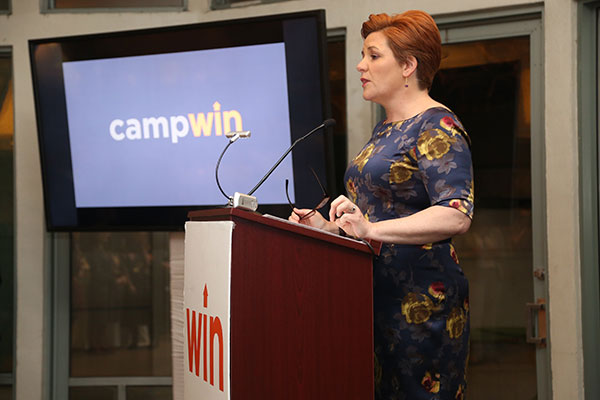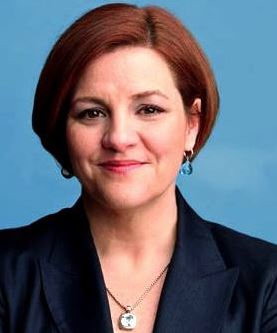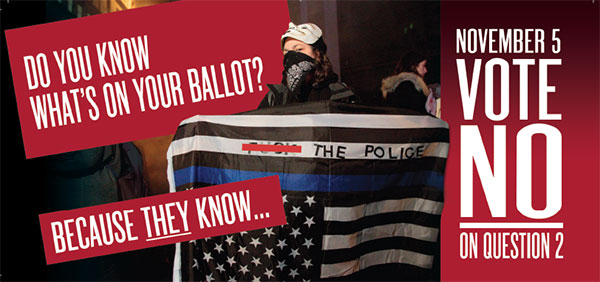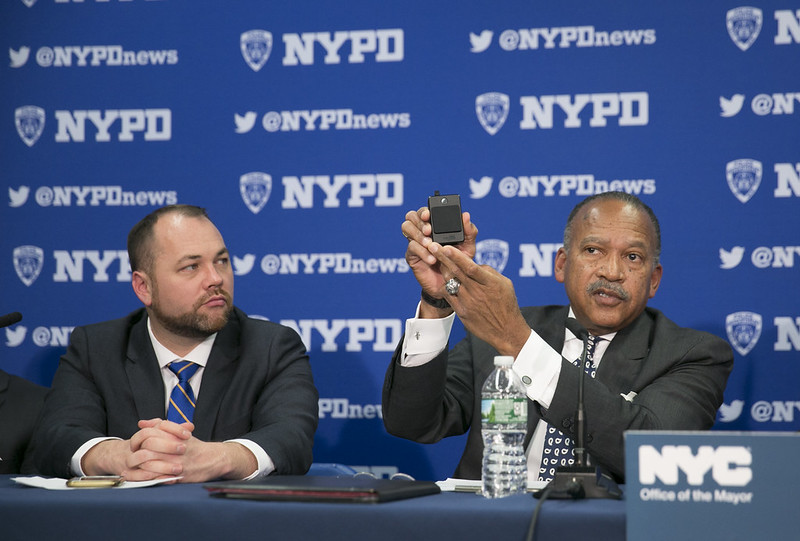Max & Murphy Podcast: Christine Quinn on Homelessness, Making Government Work, & Her Future

(photo: @WINNYC_ORG)
November 13, 2019 - Max & Murphy Podcast: Christine Quinn on Homelessness, Making Government Work, & Her Future
 Former City Council Speaker Christine Quinn, now the CEO of Win, one of the city's largest homeless shelter providers, joined the show to discuss the city's homelessness crisis, Win's work, broader government issues, former Mayor Michael Bloomberg's likely entrance into the presidential race, and her own political future.
Former City Council Speaker Christine Quinn, now the CEO of Win, one of the city's largest homeless shelter providers, joined the show to discuss the city's homelessness crisis, Win's work, broader government issues, former Mayor Michael Bloomberg's likely entrance into the presidential race, and her own political future.
Listen to the conversation and let us know what you think -- we're on Twitter @TweetBenMax and @JarrettMurphy. You can listen to the show through the embedded audio below or download the episode wherever you get your podcasts, under "Max & Murphy," and listen to Max & Murphy live on Wednesdays at 5 p.m. on WBAI radio, 99.5FM or wbai.org.
***
by Ben Max, Gotham Gazette
@tweetBenMax @GothamGazette
After Ballot Proposal Spending, Council Member Eyes Expansion of Independent Expenditure Disclosure

One PBA IE on 2019 ballot question 2 (photo via Campaign Finance Board filing)
Just after an election where the issue became especially apparent, a New York City lawmaker is planning to introduce legislation to close a loophole that has allowed independent expenditure committees to shield donors when they spend money to sway voters on ballot proposals. The potential change in city law would bring certain donor disclosure rules in line with state regulations and extend other city regulations to what is already required for political spending on candidates by groups outside the candidate campaign.
The move by Brooklyn City Council Member Brad Lander comes five years after the city enacted disclosure regulations on independent expenditures for candidates and following two consecutive general elections where city charter revision referenda went before voters.
In the most recent election, just completed, three groups -- each with its own independent expenditure committee registered with the state -- spent over $1 million either in support of or in opposition to ballot proposals. None of those entities had to disclose their contributors to the city’s Campaign Finance Board (CFB), forcing members of the public to navigate a labyrinth of city and state databases in order to get the most complete picture of the influence of large political spenders. Nor did the independent expenditure committees have to follow a city law mandating such groups disclose their top three donors on communications with voters, a regulation in place for promoting or disparaging candidates.
“In 2014, we created a great law to provide disclosure for independent expenditures on behalf of candidates, and there is already evidence that it is working,” Lander, a Brooklyn Democrat, wrote in an email to Gotham Gazette. “This year, the first significant expenditure on behalf of a ballot measure revealed to us the need to expand our disclosure rules, already among the strongest in the nation for candidates, to cover spending for ballot measures as well.”
“I am working on introducing legislation to do just that, to ensure that the same level of transparency applies across the ballot,” he said. Lander was the lead sponsor on the 2014 legislation that created the new independent expenditure transparency requirements. It came just after the city’s raucous 2013 election cycle when IEs played a significant role in the first mayoral race following the Supreme Court’s Citizens United ruling, among other local elections where such spenders sought influence.
Lander’s stated plan comes days after the CFB issued a recommendation to the City Council suggesting lawmakers close gaps in the city’s campaign finance laws. Those gaps became more evident as spending around the ballot questions picked up in the days leading up to the general election this fall. Following the CFB recommendation, the Daily News Editorial Board endorsed the idea of closing the loophole.
In a press release issued Thursday, the CFB asked the Council to consider legislation that would amend the campaign finance laws in the City Charter to require independent expenditure committees to disclose their contributors to the CFB via its online portal; and publish “paid-for-by” notices on electioneering materials -- both of which are already required for spending on behalf of candidates under the 2014 law.
The City Charter also requires organizations making contributions of $50,000 or more to independent spenders on behalf of candidates to disclose all donors who gave more than $25,000 in the preceding 12 months.
Under the CFB recommendation, the paid-for-by notices would include a list of the independent spender’s top three donors as well as a weblink to the agency’s online portal, where the public can view detailed information on political spending. The aptly-titled “Follow the Money” portal presently contains details on how much was spent on political campaigns by independent expenditure committees, including what the spending went to and when it was spent, with images and videos of each ad posted or aired.
But that is the extent to which the public can follow the money through the CFB’s relatively user-friendly online resource. To find out who is bankrolling the independent expenditure committees, interested parties must visit the State Board of Elections’ cumbersome financial disclosure webpage where the information is largely decentralized.
“New York City has the country’s strongest disclosure requirements and resources for independent expenditures. Unfortunately, when it comes to ballot proposals, our law has a blind spot,” said CFB Executive Director Amy Loprest in the Thursday press release.
“Bringing the disclosure for ballot proposals in line with the requirements for independent expenditures about candidates will provide voters with important information that will help them cast informed votes, and we urge the Council to take action,” the statement reads.
For the past two general elections, New York City voters have had the opportunity to approve or reject City Charter amendments proposed by successive Charter Revision Commissions. Charter commissions can be empanelled by the mayor or through City Council legislation to examine the city’s central body of laws, take public testimony, and make recommendations for reform.
This year, the Charter Revision Commission was created by the City Council in conjunction with then-Public Advocate Letitia James and Manhattan Borough President Gale Brewer. The commission put five questions on the ballot, together containing 19 distinct amendments, dealing with a range of city election and governance issues.
In the weeks leading up to the start of the nine-day early voting period in late October, and Election Day on November 5, three independent expenditure committees together spent roughly $1.15 million urging voters to cast ballots either for or against one or more of the proposals. All five questions were overwhelmingly approved by voters citywide.
The vast majority of independent spending was around Question 1, which contained an amendment that would bring ranked-choice voting to certain New York City elections. The voting method, which allows voters to list candidates in order of preference rather than making a single all-or-nothing choice, was backed by a coalition of good government reformers and elected officials under an independent expenditure committee called “Committee for Ranked Choice Voting NYC.” The committee spent a total of $986,017 on digital, TV, and direct mail advertising between mid-September and Election Day, according to the CFB portal.
But, while the principals of the committee are required to be reported to the CFB, the committee’s funders are not. According to the Daily News editorial, which analyzed data from the State Board of Elections, the Committee for Ranked Choice Voting had received a total of $1,996,948.33, of which 90 percent is from just four large contributors.
Ballot Question 2, which dealt with police oversight, also saw significant spending, but to vote down the proposal. That campaign was waged by the city’s largest police officer union.
While there were independent expenditures made for and against ballot proposals in the 2018 general election, the total independent spending on those campaigns was a much smaller $125,659, according to the CFB portal.
***
by Ethan Geringer-Sameth, reporter, Gotham Gazette
@GeringerSameth @GothamGazette
Vast Difference in NYPD Provision of Body Camera Footage to District Attorneys Versus Police Watchdog

(photo: William Alatriste/City Council)
One of the most visible changes to American policing in the wake of the controversial 2014 killings of Michael Brown and Eric Garner, two unarmed black men, by law enforcement, is the proliferation of body-worn cameras. But as the cameras become a larger part of the police oversight constellation in New York City, the NYPD has been slow to release footage to the very agency meant to investigate alleged officer misconduct, including excessive, even deadly, force.
When Mayor Bill de Blasio announced the launch of phase one of the body-worn camera (BWC) program in 2017, it was billed as a transparency measure aimed at reducing “mistrust between police and community.” But the purported effort to improve police accountability has been more focused on producing evidence in criminal cases — where discovery laws now require it — and less on supporting misconduct investigations by the Civilian Complaint Review Board (CCRB), the main agency tasked with carrying them out.
When an arrest is made, the arresting officer sends complete BWC footage of the event to prosecutors almost immediately and in raw, unedited form, according to spokespeople from several New York City district attorneys’ offices. But the NYPD has been delayed or completely delinquent in providing footage to the CCRB in roughly a third of the Board’s open cases — cases raised by civilians against police officers, including ones that may not have involved an arrest.
The CCRB is a civilian body separate from the police department and district attorneys, with jurisdiction over claims of excessive force, abuse of authority, discourtesy, and offensive language. Its Board members are appointed by the mayor in conjunction with the City Council and police commissioner, and it is led by an executive director supervising roughly 180 employees. Under a 2012 agreement with the NYPD, the Board can prosecute allegations it substantiates in an administrative trial setting. Such a trial led outgoing Police Commissioner James O’Neill to fire Daniel Pantaleo this summer for misconduct during Garner’s fatal arrest.
The de Blasio administration announced the completed roll-out of roughly 20,000 BWCs to all uniformed police officers in March, after two years piloting the program. Another 4,000 cameras have since been deployed to members of specialized NYPD units.
Month-to-month data published by the CCRB in October shows that since the full implementation of body cameras was announced, between 29 and 37 percent of its open investigations have footage requests pending with the NYPD. Prosecutors, on the other hand, have received hundreds of thousands of BWC videos since the technology was adopted, and in most cases the footage is transmitted automatically following an arrest.
Police officers are required to turn body cameras on during arrests, incidents where force is used, as well as certain stops and searches, patrols, and interactions with the public. The NYPD Patrol Guide also requires cameras be turned on during “potential crime-in-progress assignments,” including investigations into a “suspicious person” and any incident involving a weapon.
As body cameras have proliferated across New York, they have become increasingly essential to the work of the Civilian Complaint Review Board, according to officials who say the evidence is “crucial” in investigating alleged misconduct -- the CCRB can only open a case when a civilian complaint is lodged.
They are also used by prosecutors in nearly every criminal case and the footage now falls under the state’s discovery laws, which lawmakers overhauled this year.
According to the communications director for Brooklyn District Attorney Eric Gonzalez, Oren Yaniv, Gonzalez’s office has accessed over 140,000 body worn camera videos since 2018. Other district attorney offices also reported receiving thousands of BWC videos.
Spokespeople for New York City district attorneys described a proprietary management system used by the NYPD that automatically transmits footage once an officer plugs their camera into a docking station and registers an arrest. “The NYPD system does not allow deleting, editing or altering the videos,” Yaniv wrote in an email.
Cooperating with the CCRB
The CCRB’s requests are handled differently. The results can mean censored and incomplete footage and significant delays in responding to investigators, who are operating under a statute of limitations.
Video footage, whether from a body-worn device, cell phone, or security camera, has become instrumental to CCRB investigations. In September, the CCRB substantiated 38 percent of misconduct allegations where video of the incident was available, compared with just 11 percent of cases where no video was available, according to an analysis released by the agency.
“The reality of policing in New York City is that Eric Garner’s death in 2014 is not the only instance of police misconduct captured on video,” said CCRB Chair Fred Davie, at the agency’s September Board meeting.
Body-worn cameras help the CCRB make conclusive determinations, “but we can do so only if we receive that body-worn camera footage and receive it from the NYPD in a timely fashion,” Davie said.
Under the City Charter, the police department has a legal obligation to provide BWC video and other evidence to the CCRB, according to a CCRB representative. But, unlike prosecutors collecting evidence related to an arrest, the CCRB’s requests are subject to redaction and censorship, as well as delay.
Before sending footage to the CCRB, the NYPD is legally required to “pixelate-out” people’s faces under certain circumstances captured on film, according to Al Baker, director of media relations at the police department. “For example, potential medical treatment (protected under federal law) or other prisoners in a cell whose arrest may be sealed,” he wrote in an email.
“Also, we withhold the sex-crimes videos in their entirety, pursuant to CRL 50-b [part of the state’s civil rights statute], unless a waiver is provided by the victim of the sex crime. This is a meticulous process that is necessary before release,” he added.
Baker said the department has a dedicated body-worn camera unit for processing requests, which he says has received additional personnel to address the “backlog.”
CCRB officials are indeed concerned that “unless there is a significant change, the backlog of CCRB requests for video evidence will continue to increase and impair the CCRB’s ability to complete investigations within the 18-month statute of limitations,” according to a September tweet from the Board’s account.
“With all of its resources and technical expertise, the NYPD can and must produce body-camera footage much more quickly,” wrote Christopher Dunn, Legal Director of the New York Civil Liberties Union, in an email to Gotham Gazette.
From January 2018 to November 7, 2019, the CCRB requested body camera footage in 5,149 investigations, according to data shared with Gotham Gazette. Throughout 2019, the number of requests has been between 300 and 400 per month, with two exceptions. The first month that the number of active body camera-involved cases reached 300 was in October 2018, five months before City Hall announced the full rollout of the cameras.
But it wasn’t until the complete implementation in March of this year that the NYPD’s response rate precipitously fell. Between January 2018 and February 2019, the portion of CCRB cases awaiting NYPD body camera footage hovered between just 1 and 17 percent. Since March, that range has lept to between 29 and 37 percent.
Footage in about 43 percent of requests is turned over by the NYPD to the CCRB within 30 days, and another 35 percent take between 30 and 60 days. In about 13 percent of footage requests by the CCRB — 79 cases as of the end of September — the calls have gone unanswered by the NYPD for more than 90 days.
“Even now, there is one case in particular — an allegation of excessive force and a civilian experiencing several broken bones and brain hemorrhaging — for which our investigators per the NYPD cannot access the body-worn camera footage related to that case,” Davie said at the September Board meeting. The police department, he said, had denied the request in order to protect the privacy of a minor who was present in the relevant footage.
Asked about the CCRB's trouble getting police body camera footage, the mayor's office said it is under review. “We are reviewing these reports, and we will work with PD and CCRB on next steps,” wrote Olivia Lapeyrolerie, a spokesperson for Mayor de Blasio, in an October email to Gotham Gazette.
The City Council Committee on Public Safety plans to hold an oversight hearing on Monday, November 18 to examine the police department’s implementation of the cameras. The committee will discuss a bill introduced by Public Advocate Jumaane Williams that would require the NYPD to report information on the BWC program, including each incident where an officer uses their camera.
Baker noted that the NYPD this year has the largest deployment of body cameras in the nation, “therefore, we need to locate all BWC footage from any responding officer to a particular scene and make sure it goes through that rigorous process before being released.”
Even the process of releasing footage to the CCRB and the public has been opaque since the city’s rollout of BWCs, and remains so for the CCRB.
The police department recently published a two-page policy, an “operations order” within the department, for release of body camera footage of what it calls “critical incidents” — cases of death or serious injury because of police force — to the public, seven months since full implementation of the cameras was announced.
But while it discusses release of body camera footage to prosecutors and the public, the policy makes no explicit mention of footage capturing other potential misconduct that would fall under the CCRB’s jurisdiction. An NYPD spokesperson confirmed by phone that dealing with CCRB requests falls outside the newly-published policy.
When asked if any written procedure exists, Baker wrote in an email, “That practice is constantly being fine-tuned to offer even faster turnarounds considering that a single request from the CCRB, about a single policing encounter, can mean that lengthy videos from dozens of officers must be carefully reviewed and possibly redacted.”
***
by Ethan Geringer-Sameth, reporter, Gotham Gazette
@GeringerSameth @GothamGazette




